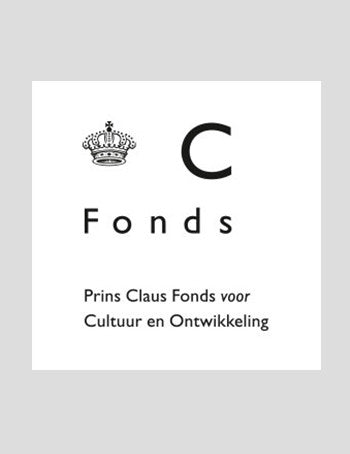
PRINCE CLAUS FOUNDATION
Widad Kawar
February 2, 2013, in a ceremony at the "Tiraz Centre", Mrs. Widad Kawar received the Prince Claus Award from Ambassador Piet de Klerk. Mrs. Widad Kawar received the Prince Claus Award for her valuable contribution to preserving Palestinian, Jordanian and wider Arab cultural heritage and her active documentation and distribution of the intellectual content of her superb collection of exceptional Palestinian and Arab embroidery.
The award recognised 11 individuals from across the globe for their positive impact on the cultural development of their societies.
Kawar was honoured for her lifelong research, documentation and preservation of cultural heritage of Arab dresses and for her efforts to restore the traditional art of embroidery in Jordan.
The award ceremony was held at her newly opened gallery, showcasing some 2,000 traditional dresses.
The following is the speech given by Ambassador Piet de Klerk:
Excellencies, ladies and gentlemen, dear Mrs. Kawar,
I am greatly honored to be with all of you here today surrounded by the life work of a woman who has dedicated her efforts to protect her culture and legacy. With great passion, steadfast dedication and commitment Mrs. Kawar rescued and preserved an important cultural heritage for all of us to enjoy today.
Dear guests, today we celebrate the fact that Mrs Kawar has been awarded the prestigious Dutch Prince Claus Award. This award is named after the late husband of Her Majesty Queen Beatrix. You will all have heard the news last week of her nearing abdication. During the Queen's speech, in which she announced her decision to relinquish the throne, she mentioned Prince Claus to have been of great support for many years. The Prince Claus award honours artists around the world who can point to outstanding achievements in the field of culture and development. The award particularly honours artists who have had significant achievements in circumstances where resources and opportunities for cultural expression, creative production and research are limited and cultural heritage is being threatened. Mrs. Meindersma, the Director of the Prince Claus Fund, will no doubt say a bit more about the Fund and the award after I have finished.
Mrs. Kawar is being honoured for her valuable contribution to preserving Palestinian, Jordanian and wider Arab cultural heritage and her active documentation and distribution of the intellectual content of her superb collection of exceptional fabrics, dresses, shawls, and headcovers, of Palestinian and Arab embroidery.
For more than 60 years Mrs. Kawar has gathered more than 2,000 samples of the textile artistry of Palestinian, Jordanian, Syrian, Bedouin and other Arab cultures. The oldest item in her collection is more than 120 years old. Her collection is shared through exhibitions around the world, access to her extensive research database, photo archive and library, and her publications, which include Weaving in Jordan (1981), Palestinian Embroidery, Traditional Fallahi Stitch (1992) and Threads of Identity: Preserving Palestinian Costume and Heritage (2011). My embassy was honoured to organize an exhibition with her two years ago, at the National Gallery of Fine Arts. That exhibition made clear that in a world with sharp dividing lines, art and culture can form a bridge and make connections and stimulate intercultural dialogue.
Mrs. Kawar's work distinguishes itself by the highest standards of quality, dedication, and tenacity in collecting and preserving a disappearing art, and intellectual qualities in describing and ensuring the accessibility of this art form. Mrs. Kawar is not just a collector of traditional Palestinian and Jordanian dresses, costumes, textiles and jewelry: she owns the world's largest collection of embroidered garments from Palestine, along with all the clothing accessories and jewelry that were worn and made in Palestine.
Dress making and embroidery is an old tradition in Jordan and Palestine. Each village and region has its own characteristic colours and stitches. The pattern, stitch and quality of the material all convey where and by whom the dresses were made. Mrs. Kawar told me, when I was privileged to see her collection in her home, that through changes in patterns and stitch, historical developments such as increasing contact with European countries can be traced. Without words, these dresses tell stories that include historical and geographical detail.
Normally, artefacts that tell stories of such historical and geographical detail are being kept in museums. Museums are places of power, in the sense that by including certain artefacts in their collections whilst necessarily excluding others, they preserve certain naaratives whilst others are at least to a certain extent being silenced. Mrs. Kawar's dresses form one of the few comprehensive collections of Palestinian art and would in any other country be preserved in a dedicated museum. Her works, however, have until now been kept in her own house. I am therefore particularly pleased with the establishment of this small museum for her collection, for many more people to enjoy.
The preservation of cultural heritage can shape a nation's image and its international relations. In a country like Jordan, cradle of ancient civilizations, cultural heritage determines to a large extent how the country is seen the world over. Whoever thinks of Jordan thinks of Petra, Jerash and desert castles: memories of different peoples living in this area. In our neighbouring country Syria, important cultural heritage is under serious threat, day after day, of demolition, destruction and carelessness. Of course human lives are far more valuable than buildings and paintings, but the threat posed to the extensive, and spectacular Syrian cultural heritage is making my heart bleed.
The Netherlands also has a cultural heritage to be proud of, some of its oldest remains are Roman like in Jordan, most of it of more recent centuries like our Golden Age, the seventeenth century. Proof of the great importance the Netherlands attaches to preserving cultural heritage is the renovation of the Rijksmuseum in Amsterdam where many of the great paintings of that period are shown, or rather will be shown when, after a decade, the museum opens its doors again on April 13. A must see.
Cultural heritage is where we come from; cultural heritage is what we build on as we plan for the future, as we continue to develop. The Prince Claus Fund justly considers development as not only an economic process, but also - or primarily - as a cultural process, in which persons play a vital role. As Prince Claus put it: "Culture is a basic need". I personally like the combination of the two words that the Prince Claus Fund uses: culture and development. We preserve the best of what was made by the culture we come from, in order to further evolve, inspired by the past. May that also be the role of this museum.
Mrs. Kawar, dear Widad, I will stop here and present to you the much deserved Prince Claus Award. Your accomplishments over the years are outstanding and deserve the highest appreciation. Please accept the Prince Claus Award.


